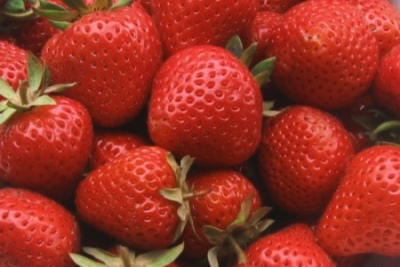
- Authors: Italy, Coviro cattery
- Name synonyms: Argentera
- The size: medium and large
- Weight: 25-40 gr
- Yield rate: high
- Ripening terms: mid-late
- Appointment: deep freeze
- Description of the bush: powerful, densely leafy
- Berry color: orange-pink
- Winter hardiness: winter hardy
Italy has extensive experience in fruit and berry breeding and is considered one of the main "players" in this market. Gardeners in many countries are happy to use Italian strawberry varieties, adapting them to their conditions, for example, the Argentera variety.
Breeding history of the variety
Strawberries are cultivated in Italy for the domestic market and for export all year round. The country's territory has several climatic zones, so the harvest is harvested even in January (in the southern regions). The climate ranges from subtropical to cooler temperate continental, for which the Argentera variety is intended. This recent development from the Italian Coviro kennel has excellent quality characteristics.
Description of the variety
Argentera is a high-yielding, winter-hardy variety of medium late fruiting with large berries of an unusual orange-scarlet hue. The fruit is sweet, high in sugar. The variety is undemanding to the quality of the soil, has good adaptability, but is very dependent on watering in dry weather.
Ripening terms
To create a never-ending "berry conveyor", many gardeners grow strawberries at different ripening times. Argentera is a mid-late variety that yields about 10 days before the popular late-ripening Malvina strawberries. The ready-to-eat berries can be harvested from July to August.
Yield
Due to its high yield, Argentera is positioned as a profitable variety for commercial cultivation in the open field. The berries are practically not shallow by the last harvest. Reviews from nurseries and private gardeners speak of impressive yields. The variety is distinguished by good transportability, dense berries do not crumple, do not flow during storage and transportation. Berries are great for deep freezing for the winter - after defrosting, they retain their shape and excellent taste.
Berries and their taste
The powerful and spreading bushes of Argentinera have dense foliage and long peduncles that bend under the weight of the fruit. Berries of regular conical shape are practically uniform in size throughout the entire fruiting: only large and medium, weighing 25-40 g. The surface of the berries is shiny, and the flesh is dense and juicy.
Sugar content is above average: on the Brix scale, the figure is 7.7. The berries are aromatic, sweet, with a slight sourness. There is evidence that the berries do not take sugar and become looser during a rainy, cold summer.
A distinctive feature can be called a pink-orange color, which becomes more scarlet in very ripe berries. Due to such a light color, Argentera has an insufficiently attractive, unusual presentation for many, which frightens off some buyers.
Growing features
Like many high-yielding varieties, Argentera needs abundant watering, especially during dry summers (warm water under the root every 3 days), and seasonal feeding. For the growth of the bush and foliage, it is necessary to apply nitrogenous fertilizers in the first spring months. At the time of flowering, plants need microelements: complex feeding will be the best choice. After harvesting, organic matter is used - wood ash or special fertilizer "Autumn".




Site selection and soil preparation
The strawberry plantation should be located in a well-lit and sheltered from the winds. A feature of Argenthera are powerful bushes with widely spread foliage, therefore, when planting, at least 60 cm should be left between the rows, and about 35 cm between the seedlings.
The variety is unpretentious to the fertility and quality of the soil, it grows well even on "poor" soils. As with many varieties, pH neutral loam is preferred. The site is carefully dug in 2-3 weeks. Lime or a mixture should be added to acidic soil: ash, manure, dolomite flour.

Pollination
Argentera does not require any forced pollination measures from the breeder - the variety is self-pollinated.

One of the important techniques in strawberry care is feeding. Regular fertilization guarantees a rich harvest. There are several different ways to feed strawberries, and each of them is designed for a specific period of plant development. During flowering, fruiting and after it, feeding should be different.
Frost resistance and the need for shelter
Derived for the continental climate, Argentera surprisingly tolerates winters not only in Western Europe, but also in Ukraine and Russia. But if the winter months are characterized by large temperature drops from thaw to severe cold and a small amount of snow, then the plants should be covered with a layer of mulch and agrofibre.

Diseases and pests
Italian growers have created a very resistant variety that successfully resists major diseases and pests. May be slightly affected by late blight and wilt. For prevention purposes, it is possible to treat the bushes with Bordeaux liquid before the onset of winter or early spring.

Strawberries are often subject to many dangerous diseases that can seriously undermine their condition. Among the most common are powdery mildew, gray mold, brown spot, anthracnose, and verticillosis. Before buying a variety, you need to inquire about its disease resistance.
Reproduction
Argentera forms an average number of whiskers, with which it is recommended to propagate it. Peduncles are removed from the bushes selected for reproduction so that all the power of the plant goes to the formation of rosettes. Rosettes with emerging roots are rooted in cups with nutrient soil directly on the mustache or cut and rooted separately. In late July - early August, sockets can be planted.



















































































